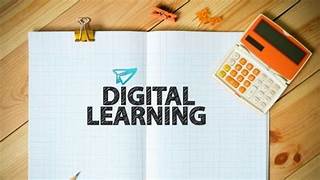How Is Online Education Going to Change the Way Students Learn?
The rise of online education has revolutionized the learning landscape, offering unprecedented flexibility, accessibility, and innovation. As we delve deeper into the digital age, the question arises: how is online education going to change the way students learn? This article explores the transformative impact of online education on learning methodologies, student engagement, and the broader educational framework.
A Shift Toward Personalized Learning
Tailored Curricula
Online education allows for the creation of personalized learning experiences tailored to individual student needs. Adaptive learning platforms utilize artificial intelligence to analyze students’ strengths and weaknesses, offering customized content and recommendations. For instance, a student struggling with algebra can receive additional exercises and tutorials, while excelling in geometry might prompt more advanced material.
Self-Paced Learning
One of the most significant shifts is the transition from rigid schedules to self-paced learning. Online platforms enable students to progress through material at their own speed, accommodating diverse learning styles and paces. This flexibility particularly benefits adult learners and those balancing education with work or family responsibilities.
Enhancing Accessibility and Inclusivity
Breaking Geographic Barriers
Online education eliminates the constraints of geography, granting access to quality education for students in remote or underserved areas. A student in rural Africa, for example, can enroll in a course offered by a top university in the United States.
Accommodating Diverse Learners
Online platforms are often equipped with features like subtitles, screen readers, and language translation tools, making education more inclusive for students with disabilities or those who speak different languages. This inclusivity fosters a more diverse and equitable learning environment.
Redefining Teacher-Student Interactions
Virtual Classrooms
The traditional classroom dynamic is being reimagined through virtual classrooms, where students and teachers interact via video conferencing, discussion boards, and collaborative tools. These environments encourage participation from students who might feel hesitant to speak up in physical classrooms.
Increased Access to Expertise
Online education connects students with educators and experts worldwide. A biology enthusiast can attend a webinar by a leading marine biologist, or an aspiring programmer can learn from a Silicon Valley engineer, breaking down traditional barriers to expertise.
Leveraging Technology for Interactive Learning
Gamification
Gamification elements, such as quizzes, badges, and leaderboards, make learning engaging and enjoyable. Platforms like Duolingo use these techniques to teach languages effectively, transforming what might otherwise feel like rote learning into an interactive experience.
Virtual and Augmented Reality
Immersive technologies like virtual reality (VR) and augmented reality (AR) are revolutionizing fields like medicine, engineering, and history. Imagine a history student exploring ancient Rome through VR or a medical student practicing surgery in a simulated environment—these experiences make learning tangible and memorable.
Artificial Intelligence Tutors
AI-powered chatbots and tutors provide instant assistance, answering questions and guiding students through complex topics. These tools supplement traditional instruction, ensuring students never feel stranded when tackling challenging material.
Encouraging Lifelong Learning
Microlearning Modules
Online platforms promote the concept of microlearning, where information is delivered in bite-sized chunks. This method aligns with busy lifestyles and shorter attention spans, making it easier for individuals to integrate learning into their daily routines.
Certifications and Skill Development
Online education emphasizes skill-based learning, offering certifications that boost employability. Platforms like Coursera, Udemy, and LinkedIn Learning cater to professionals seeking to upskill or pivot careers, fostering a culture of continuous learning.
Challenges and Opportunities
Digital Divide
While online education democratizes access to learning, it also highlights the digital divide. Students without reliable internet access or devices are at a significant disadvantage. Addressing this inequity is crucial to ensure that online education benefits all.
Maintaining Engagement
Sustaining student engagement in a virtual setting can be challenging. Without the physical presence of teachers and peers, students may struggle with motivation and accountability. Innovative approaches, such as interactive content and regular check-ins, are vital to combat this issue.
Quality Assurance
Ensuring the quality of online courses is paramount. Accreditation bodies and institutions must establish rigorous standards to maintain the credibility and value of online education.
The Future of Learning
Online education is not merely a temporary response to technological advancements; it represents a paradigm shift in how we perceive and approach learning. As technology evolves, the possibilities for enhancing education are boundless. From personalized curricula and global accessibility to immersive experiences and lifelong learning opportunities, online education is reshaping the educational landscape.
The journey ahead involves addressing challenges like the digital divide, ensuring quality, and fostering engagement. With the right strategies and innovations, online education has the potential to create a more inclusive, adaptable, and effective learning environment for students worldwide.


